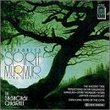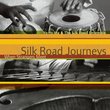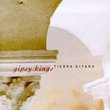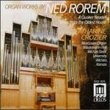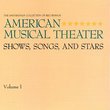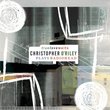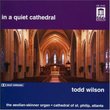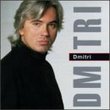| All Artists: Arvo Part, Robert MacDonald, Mark Anderson, Antony Pitts, TONUS PEREGRINUS Title: Arvo Pärt: Passio Members Wishing: 0 Total Copies: 1 Label: Naxos Original Release Date: 1/1/2003 Re-Release Date: 4/29/2003 Genre: Classical Styles: Opera & Classical Vocal, Chamber Music, Historical Periods, Classical (c.1770-1830) Number of Discs: 1 SwapaCD Credits: 1 UPC: 747313586028 |
Search - Arvo Part, Robert MacDonald, Mark Anderson :: Arvo Pärt: Passio
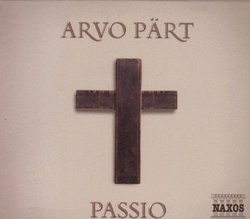 | Arvo Part, Robert MacDonald, Mark Anderson Arvo Pärt: Passio Genre: Classical
Naxos is proud to present a brand new recording of Arvo Pärt?s Passio Domini Nostri Jesu Christi secundum Joannem, a major milestone in Naxos? recording legacy and only the third recording of the work to be released o... more » ![header=[] body=[This CD is available to be requested as disc only.]](/images/attributes/disc.png?v=a4e11020) ![header=[] body=[This CD is unavailable to be requested with the disc and back insert at this time.]](/images/attributes/greyed_disc_back.png?v=a4e11020) ![header=[] body=[This CD is available to be requested with the disc and front insert.]](/images/attributes/disc_front.png?v=a4e11020) ![header=[] body=[This CD is unavailable to be requested with the disc, front and back inserts at this time.]](/images/attributes/greyed_disc_front_back.png?v=a4e11020) |
Larger Image |
CD DetailsSynopsis
Album Description Naxos is proud to present a brand new recording of Arvo Pärt?s Passio Domini Nostri Jesu Christi secundum Joannem, a major milestone in Naxos? recording legacy and only the third recording of the work to be released on compact disc. One of the most significant choral works of the late twentieth century, Pärt?s Passio has been described as "surely the bleakest, most ritualistic Passion to be composed since Heinrich Schutz?s settings of the mid seventeenth century" (Gramophone). Composed in 1982, it is one of the works in which Pärt uses "tintinnabulist" techniques ? the sound or music of bells. "I build with the most primitive materials ? with the triad. ? The three notes of a triad are like bells. And that is why I call it tintinnabulation". (Arvo Pärt) This new recording by Oxford-based ensemble Tonus Peregrinus offers a radically different take on the music from existing recordings. When recording the work, the ensemble followed all Pärt?s score markings to the letter. After the recording session, the disc was sent to the composer who listened carefully and decided to clarify exactly what he had intended by the score markings; the present recording was then edited according to his new "rules". This is therefore the very first recording of the Passio to take account of the composer?s recent clarification of precise note and rest durations. Similarly Requested CDs
|
CD ReviewsClear as a bell dm | rochester, ny | 05/24/2005 (5 out of 5 stars) "The first thing to strike me of this recording is that the sound is absolutely perfect, as clear as a bell. The end of each recitation trails and maintains a perfect pitch and flawless tone. Kudos to both the singers and the engineers. Robert MacDonald is particularly impressive. All soloists are wonderful. I've also heard the ECM version several times, unfortunately it developed a skip so I decided to try the Naxos version. Both versions are wonderful, thought the sound is clearer on the Naxos version. The ECM version has more reverberation; although this is not a necessarily bad thing. It adds a certain ambience and atmosphere. Of course the biggest difference is price. The ECM Part CDs are extremely expensive, and, well, we all know about Naxos. So if it's only one version to purchase, it's an easy choice. If you like this particular Passio of Part's, though, you may eventually seek out a used or bargain copy of the ECM version also." Ultimate expression of system L. Benjamin | Savannah, GA | 02/21/2006 (4 out of 5 stars) "Although Norman Lebrecht has criticized this piece as "so regressively reverential that it hardly emerges from the 17th century;" it only sounds superficially as if it had been written in that time period. In fact, it is thoroughly grounded in the sensibility of the 20th century. It is the apotheosis of Pärt's "tintinnabuli" system, here achieving a rigidity reminiscent of the technique of total serialism. This version goes beyond the structure exemplified in the original ECM recording, in that here the composer's plan for the silences between notes is respected. Ironically, the result, for a piece relating St. John's passion, is singularly devoid of that very emotion - at least in the normally understood sense. In its smooth evenness, the passion is understated, serene, unbroken by "events." In the liner notes, Pärt expresses his interest in what happened "before the Big Bang...where God had created the formula" (interestingly, there need be no conflict here between religion and science!). The rules governing the piece's construction were laid out beforehand, and adjusted until the desired outcome was achieved. The result is of interest for its place in the composer's development, and certainly as an experiment, taking this composition method to its ultimate (and logical) conclusion. Starkly uniform throughout, the moment of greatest excitement within the main body of the piece is the word "crucifigeretur," the longest word in the composition, occasioning thereby the furthest movement away from its base note. The piece concludes with a beautiful chorus of Qui passus es pro nobis, Miserere nobis." A Different Passion Jay Young | Austin, TX USA | 03/21/2008 (5 out of 5 stars) "If you're looking for a nice passion setting, but something different from Bach, then you can't do much better than Arvo Part's "Passio," which uses his signature sacred minimalism and tintinnabuli. He defines his signature style this way on his website: "Pärt refers to his current style as 'tintinnabuli.' This can be defined as the application of various inversions of a certain chord. Also, it is a word 'which evokes the pealing of bells, the bells' complex but rich sonorous mass of overtones, the gradual unfolding of patterns implicit in the sound itself, and the idea of a sound that is simultaneously static and in flux.'"
"Passio" is a through-composed setting of John 18-19. There are 4 sections, with 50 phrases each, and a final 10-phase sequence. Each section begins with a different solo voice, an instrument then joins it, and this pattern continues until all 8 are sounding. The tonal center is D-A-E-B, a series of overlapping 5ths. Interestingly, Christ has the longest and lowest notes, with E being the tonal center. The music continues in a minimalist fashion until the final 10-phase sequence, when the tonality changes considerably, and the piece concludes in a powerful climactic chord of "amen." Antony Pitts does a great job in pulling off Part's notoriously difficult music, and making it enjoyable. The choir is well-blended, well-trained, and execute the music beautifully. A must for any music lover looking for a passion setting that's a bit different." |

 Track Listings (4) - Disc #1
Track Listings (4) - Disc #1